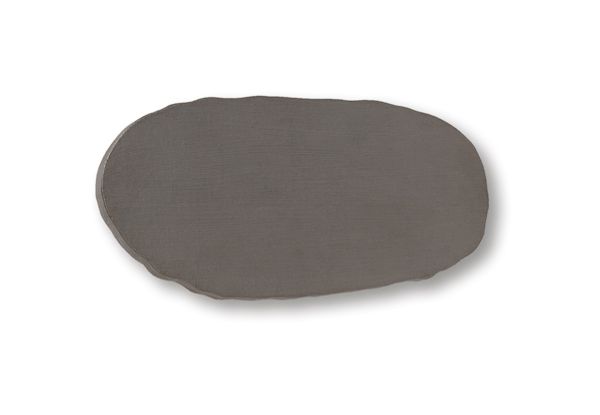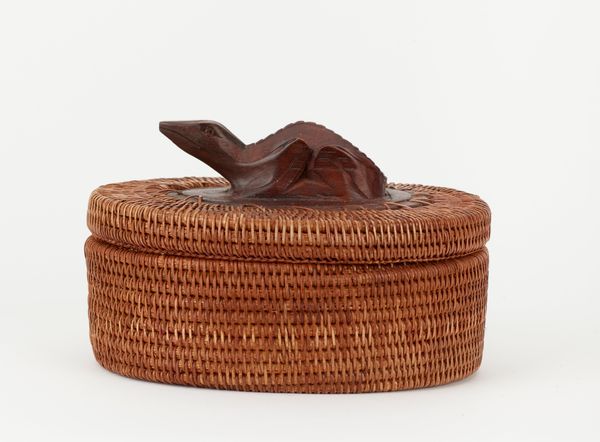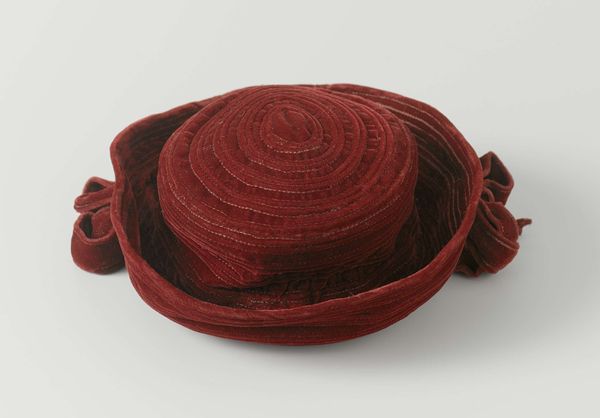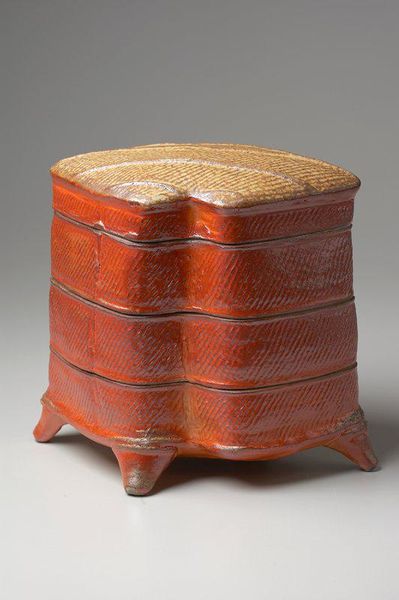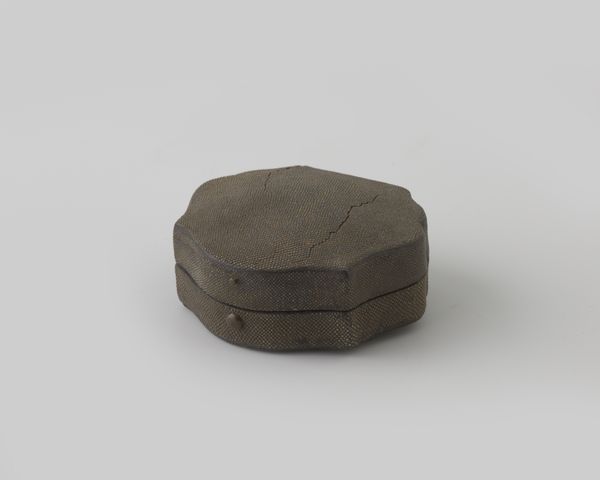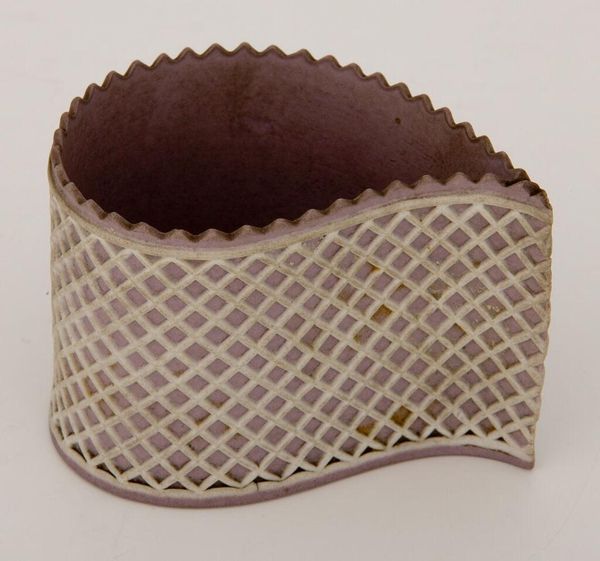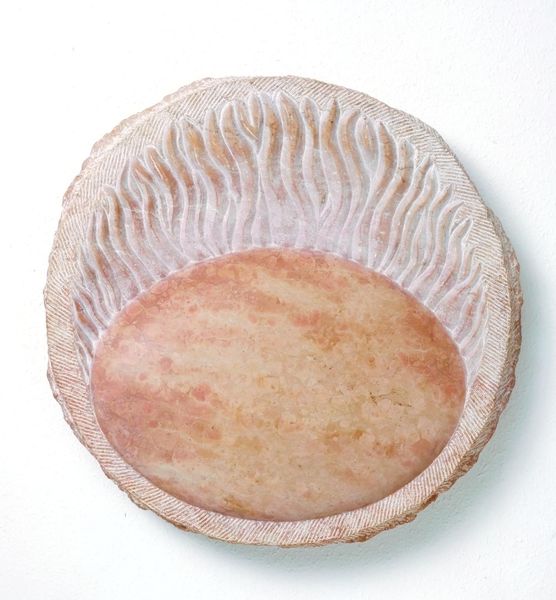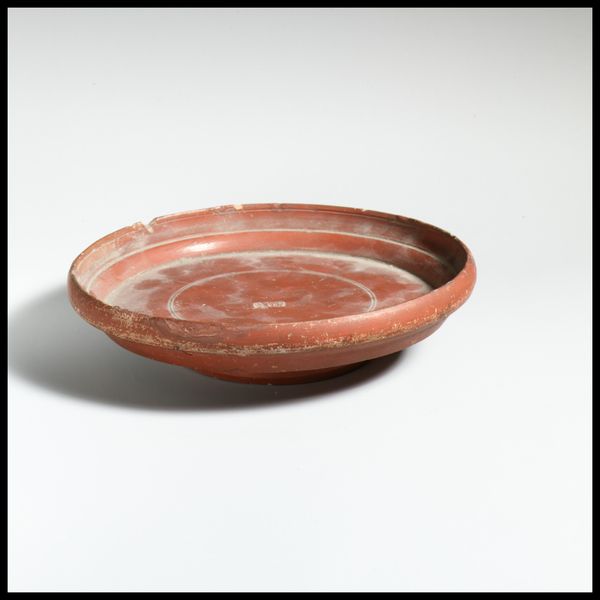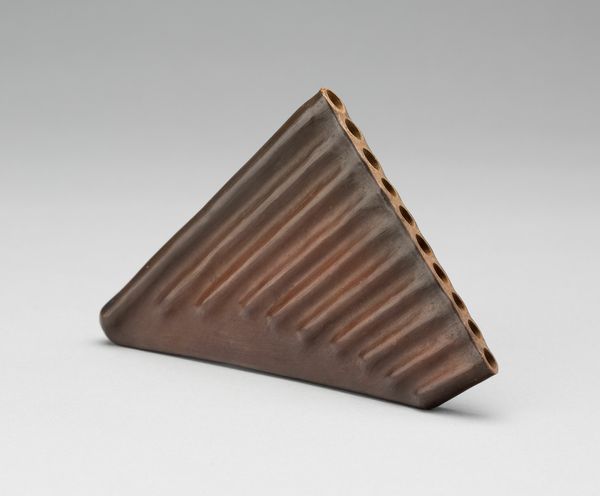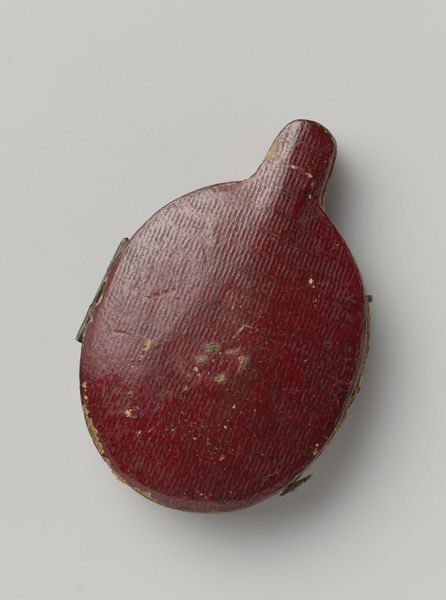
Dimensions: object: 210 x 410 x 460 mm, 70 kg
Copyright: The Work of Naum Gabo © Nina & Graham Williams/Tate, London 2014 | CC-BY-NC-ND 4.0 DEED, Photo: Tate
Editor: Here we have Naum Gabo's "Red Stone," date unknown, residing at the Tate. It's an intriguing sculpture, almost organic in form, yet clearly crafted. What underlying narratives or power dynamics do you see embedded in this work? Curator: Gabo’s constructivist approach often reflected utopian ideals and the promise of technological advancement. Consider how the "Red Stone," despite its title suggesting the natural, is shaped by deliberate, rhythmic carving. It could be read as a commentary on humanity's attempt to control and mold nature. Editor: So, the tension between the natural and the artificial reflects broader social anxieties of his time? Curator: Precisely. Gabo was working in a period of rapid industrialization and social change. His work often navigates this tension, asking us to reflect on our relationship with the world around us and how we shape it, both physically and ideologically. It reflects a public grappling with modernity. Editor: I see it now; it is an expression of its time! Thank you for your thoughtful insights. Curator: My pleasure; it is fascinating how historical context shapes our understanding of art.
Comments
Join the conversation
Join millions of artists and users on Artera today and experience the ultimate creative platform.
tate 6 months ago
⋮
Gabo is probably best known for his geometrical constructions in plastics and metals. But this unusual sculpture demonstrates his interest in more organic forms. It resembles a ridged shell, perhaps the curved spiral of an ammonite fossil. When Gabo lived in England from 1936-46, he spent much of his time with his friends, the artists Ben Nicholson and Barbara Hepworth, at St Ives on the Cornish coast. He became a keen collector of stones and pebbles found during walks along the beach. Gallery label, August 2004
